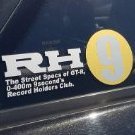2011 F1 Thread
Announcements
-
Similar Content
-
Latest Posts
-
By joshuaho96 · Posted
My advice is if you need a big build done do it in Japan. The yen rate is so favorable and there are shops that can be genuinely trusted and not micromanaged/carefully monitored every step of the way. Garage Yoshida is obviously my preferred option but they're so busy these days and all interaction with new customers has to be mediated through BBL/Toprank now. -
I haven't....but a poorly made one would terrify me. Surely a good second hand one is the go, as they don't work hard and no-one wants to keep one after they are finished with it A big consideration would be the weight of the shell you are putting on it....is it a fully dressed chassis or just the body
-
Not stock. All remade. Mostly looks stock because the pipes run to and from the standard holes in the inner guard to get to the return flow FMIC. I'm not sure which question you're trying to ask, because it seems like "stock position" vs "stock position".
-
By BaronOBeefdip · Posted
Hey, it's a GT-R, it's just as significant a moment as mine😁 It's not ideal when things are uncertain; I'm the type of person that always has a set plan for things in life so being unsure of this plan puts me in a weird place mentally. -
Hows your intake piping? Are you still running stock? Having in the stock AFM position would mean, if the BOV was shut/venting out, it'd create the almost stalling kind of effect right // "the rich pulse behaviour" due to MAF thinking air is flowing ? But this would be better than having the bov in the stock position + MAF on/just before cross over piping right?
-








Recommended Posts
Create an account or sign in to comment
You need to be a member in order to leave a comment
Create an account
Sign up for a new account in our community. It's easy!
Register a new accountSign in
Already have an account? Sign in here.
Sign In Now